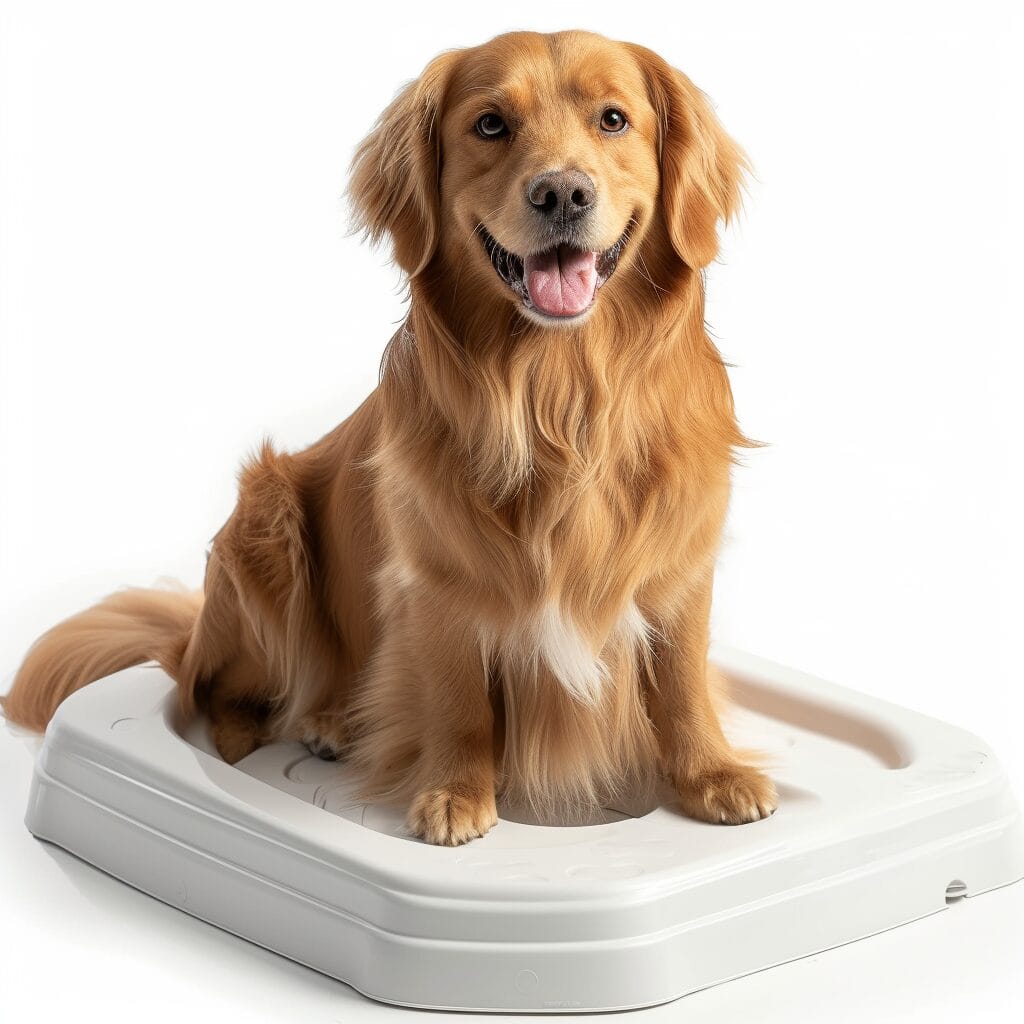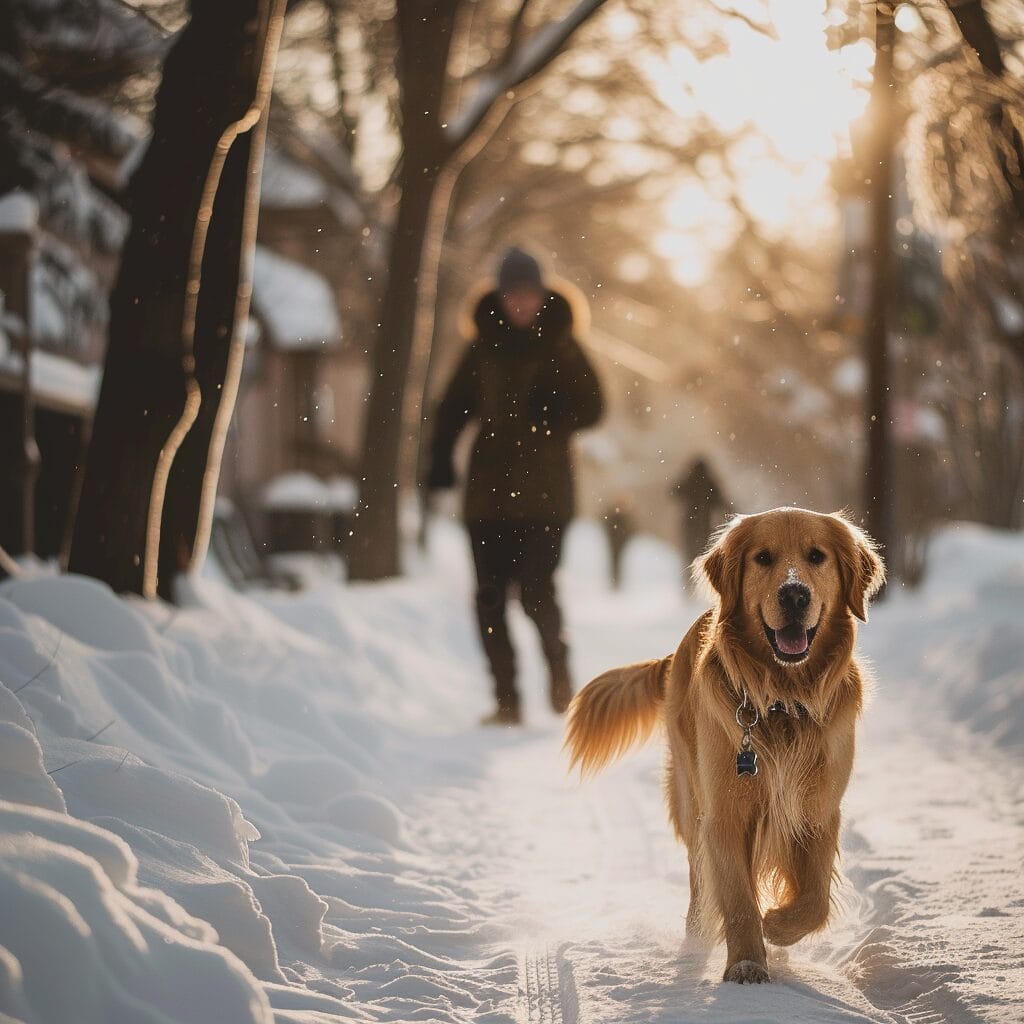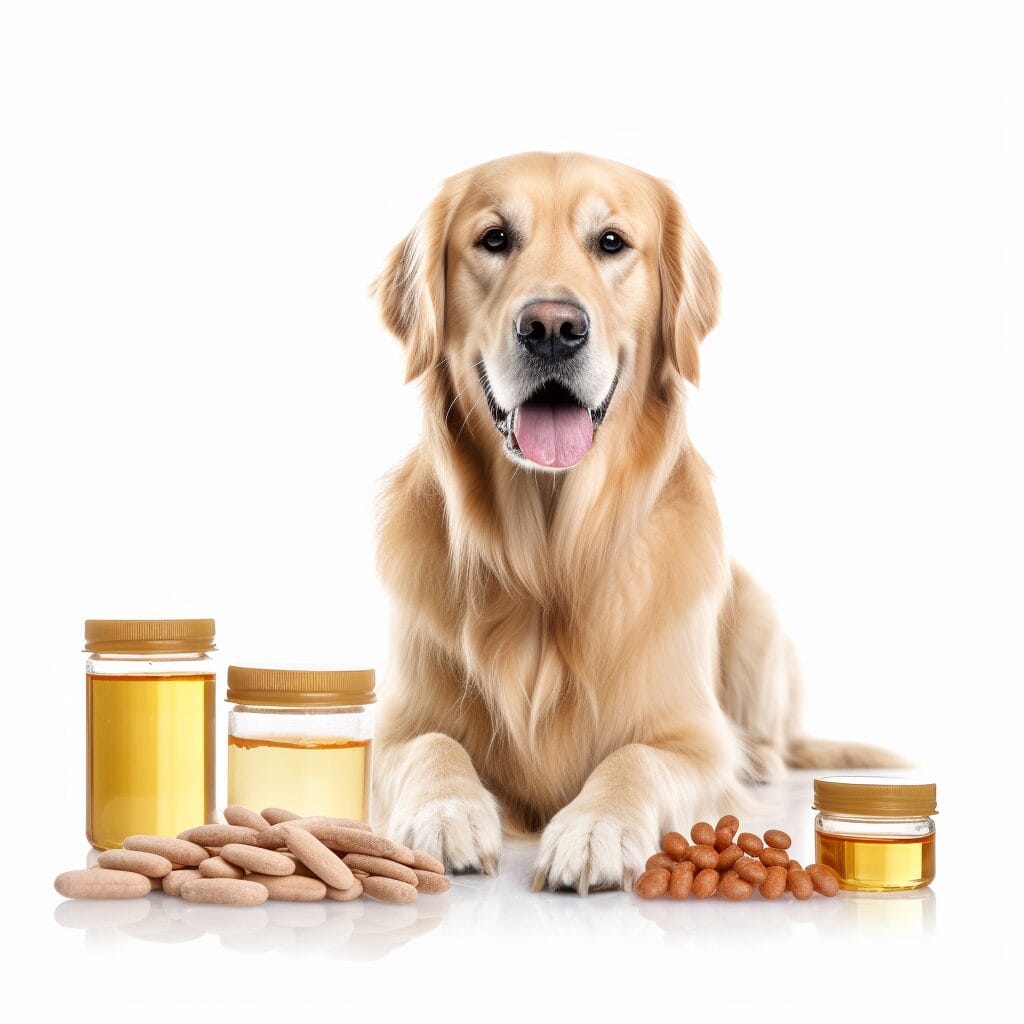Looking for the best indoor dog potty system? You’re not alone. As dog parents strive to provide the best care for their furry friends, finding a convenient and effective solution for indoor pottying is essential. With an array of options on the market, from real grass to synthetic turf and dog litter, it can be overwhelming to determine which one suits your pup best. In this guide, we’ll delve into the features, benefits, and considerations of various indoor dog potty systems, including litter box and disposable pee pads, so pet parents can make an informed decision that keeps both you and your four-legged companion happy.
What is the Best Indoor Dog Potty System
Exploring Different Types of Indoor Dog Potties
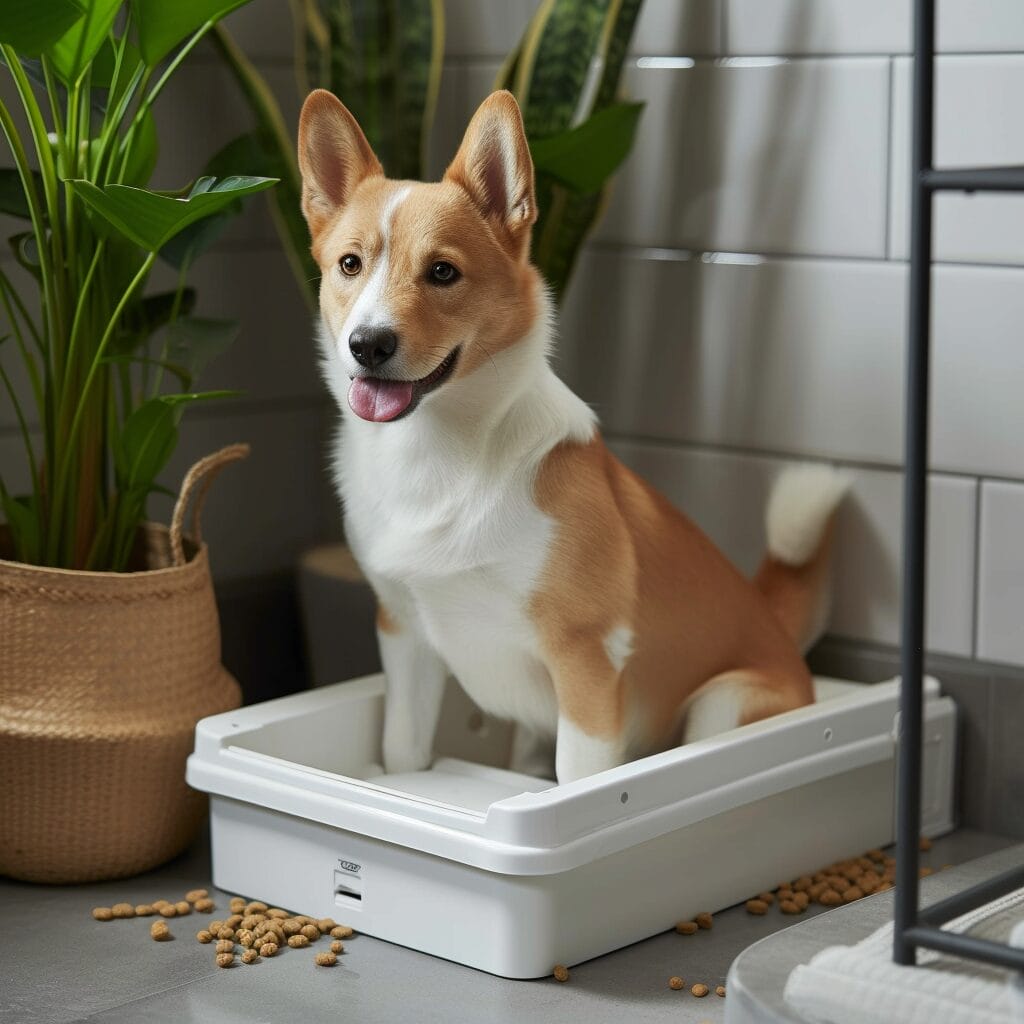
Grass-Based Indoor Potties
Indoor dog potty systems with grass, disposable pee pads, and outdoors are a good choice for pet owners who want to give their dogs a natural experience. These systems usually have real or fake grass that looks like the outdoors, making it easier for medium-sized dogs to go from outside to inside for potty training. The sod soaks up liquids, reducing smells and giving dogs a familiar surface to do their potty usage on. These systems come in different sizes for different dog breeds and living spaces, like apartments.
Grass-based indoor potty systems, like those available at Chewy, can be an excellent choice for dog parents looking for an effective and low-maintenance solution. They offer easy cleaning by allowing water to pass through the grass into a collection tray or onto disposable plastic pads underneath. This plastic feature helps prevent water leaks and keeps the surface dry and clean between uses.
Synthetic Turf Potties
Synthetic turf indoor dog potty systems are designed to provide convenience in terms of easy cleaning and maintenance. These systems usually feature artificial grass made from durable plastic materials that can withstand regular use without wearing out quickly. For pet owners with busy schedules or limited time for daily upkeep, synthetic turf potties offer an efficient way to manage their pets’ bathroom needs.
When exploring different types of indoor dog potty options, consider the benefits of synthetic turf systems which often come in stylish plastic boxes suitable for any home decor style while effectively containing liquids within the walls of the unit. Some models also incorporate features like odor-neutralizing capabilities, ensuring a fresh-smelling environment even after multiple uses throughout the day.
Disposable Pad Systems
For quick clean-ups and hassle-free maintenance, disposable pad indoor dog potty system is an ideal choice. These systems utilize absorbent pads that efficiently soak up liquids when your dog relieves itself indoors making them particularly convenient during travel or when placed inside apartments where access to outdoor areas is limited.
Disposable pad systems are available in different sizes tailored specifically for small-, medium-, or large-breed dogs offering versatility based on your pet’s needs.
Factors to Consider When Choosing an Indoor Dog Potty
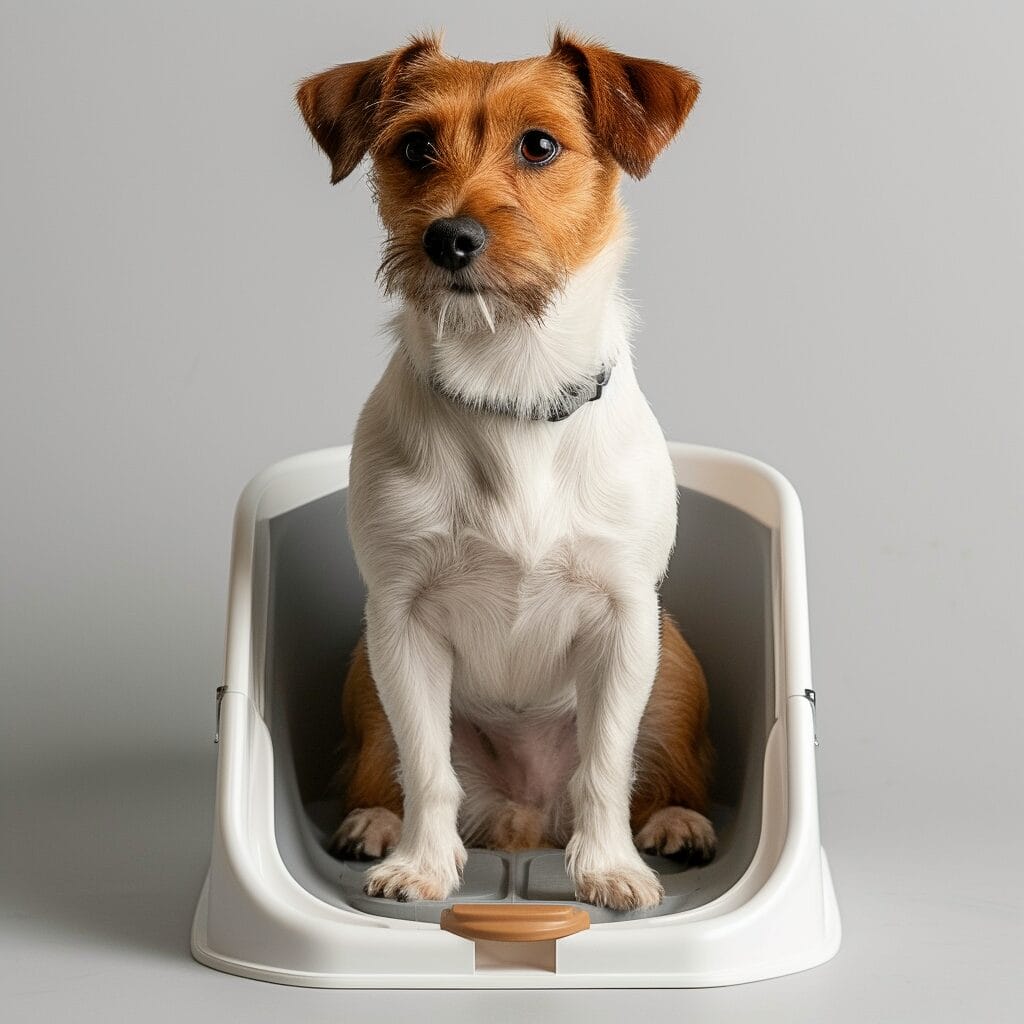
Size Match
When selecting the best indoor dog potty system, it’s crucial to consider the dimensions in inches that would best suit your furry friend. The potty should be spacious enough for your dog to comfortably relieve themselves, allowing them to move around without feeling confined.
For example, if you have a large breed like a Golden Retriever or German Shepherd, opt for a potty with ample space. Conversely, smaller breeds such as Chihuahuas or Shih Tzus will require a more compact potty.
It’s important to ensure that the size of the indoor dog potty aligns with your pet’s needs. A mismatch in dimensions can lead to discomfort and reluctance from your dog when using the designated area for elimination.
Material Quality
Another critical aspect is assessing the quality of materials used in constructing the indoor dog potty system. Look for options made from high-quality, durable materials that are resistant to moisture and odors. This is especially vital as it ensures longevity and prevents unpleasant smells from lingering in your home.
Consider materials like synthetic grass or antimicrobial plastics that effectively combat odor buildup and are easy to clean. These features contribute significantly towards maintaining a fresh and hygienic environment within your living space while providing comfort for your pet during use.
Cleaning Convenience
The ease of cleaning and replacing components of an indoor dog potty cannot be overstated when making a selection. Opting for systems with removable trays or washable synthetic grass allows for hassle-free maintenance, ensuring cleanliness at all times.
For instance, if you’re dealing with mobility issues due to age or disability, having an easily accessible tray can simplify cleaning routines immensely. Quick and straightforward replacement mechanisms enable efficient upkeep without causing disruptions in daily routines.
The Effectiveness of Indoor Dog Potty Solutions
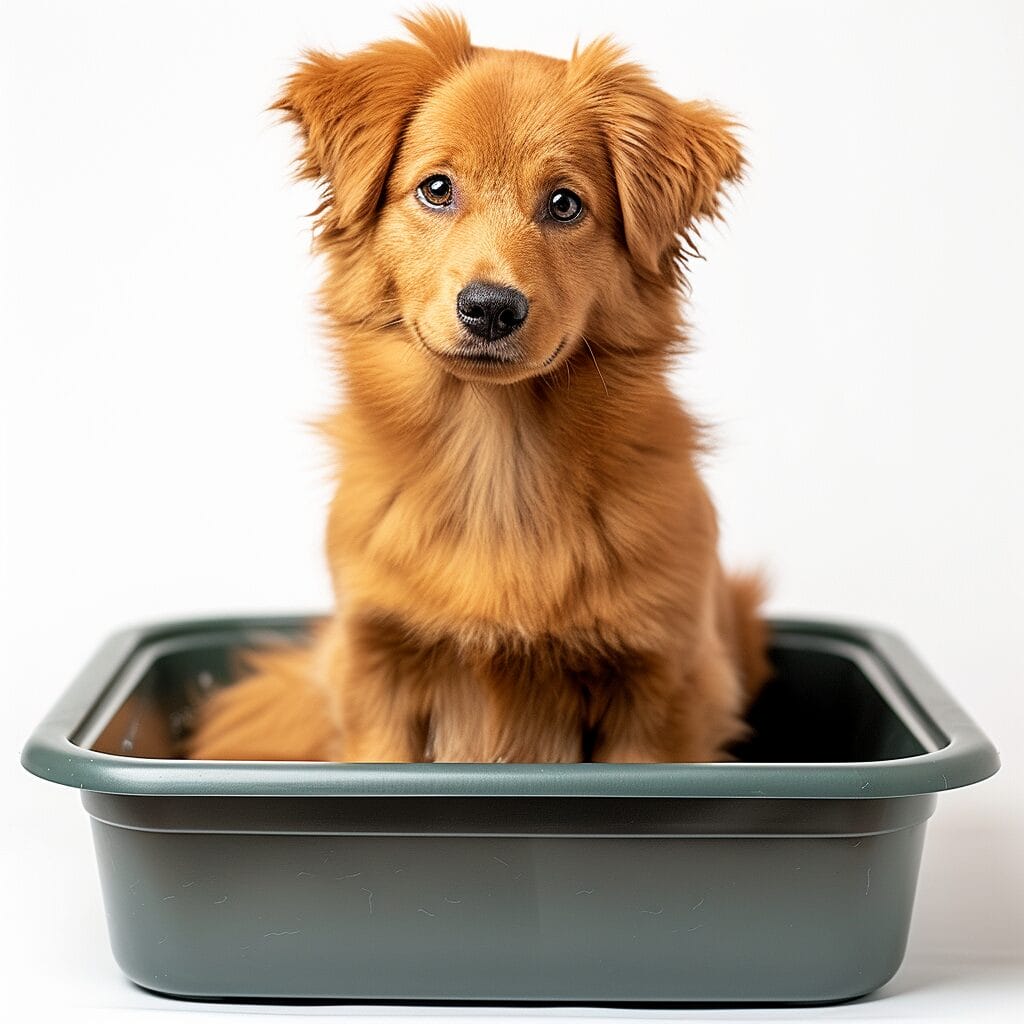
Mimicking Outdoor Bathroom Conditions
Indoor dog potty systems can effectively mimic outdoor bathroom conditions for dogs. These solutions, such as artificial grass pads or pee pads, provide a designated area for dogs to relieve themselves indoors. By replicating the texture and feel of outdoor surfaces, these potties help in transitioning dogs from outdoor to indoor bathroom habits. Dogs are more likely to use these indoor options when they closely resemble the natural environment where they usually go potty.
Consistent Training Consistent training is crucial for enhancing the effectiveness of indoor dog potty solutions. Through positive reinforcement and regular schedules, pet owners can teach their dogs to utilize these designated areas for relieving themselves. This training helps in establishing a routine and reinforcing the association between the indoor potty system and appropriate bathroom behavior. With patience and consistency, dogs can learn to use these indoor solutions reliably.
Proper Maintenance for Long-Term Effectiveness
Proper maintenance plays a significant role in ensuring the long-term effectiveness of indoor dog potties. Regular cleaning and sanitization are essential to keep these systems hygienic and odor-free. Replacing disposable pee pads or washing reusable ones promptly prevents lingering smells that might discourage dogs from using them again. Maintaining cleanliness promotes good hygiene practices for both pets and their owners.
Benefits of Using an Indoor Dog Potty

Convenient Bathroom Option
An indoor dog potty system provides a convenient bathroom option for dogs, especially during extreme weather conditions. When it’s pouring rain or snowing heavily outside, taking your furry friend for a walk can be challenging. In such situations, having an indoor potty solution ensures that your dog can relieve themselves comfortably without being exposed to harsh weather conditions.
Senior or sick dogs may struggle with mobility issues and find it difficult to go outside frequently. An indoor dog potty system offers them the convenience of having a designated spot to attend to their bathroom needs without the stress of navigating outdoor terrain. This is particularly beneficial for pet owners who live in regions with harsh winters or scorching summers.
Managing Indoor Accidents
For pet owners dealing with house training challenges or managing accidents indoors, an indoor dog potty helps in minimizing messes and maintaining cleanliness within the home. It serves as an effective tool for teaching puppies where they should do their business while reducing the likelihood of soiling carpets, floors, and furniture.
Moreover, older dogs might experience urinary incontinence or other health issues that make controlling their bladder more difficult. In these cases, having an indoor potty system becomes essential for ensuring that accidents are contained within a specific area rather than occurring unpredictably throughout the house.
Flexibility for Busy Pet Owners
The flexibility offered by an indoor dog potty is invaluable for pet owners with busy schedules or limited outdoor space. People who work long hours may not always have the opportunity to take their dogs out frequently enough during the day. Having a designated indoor spot allows pets to relieve themselves when needed without depending solely on outdoor breaks.
Furthermore, individuals living in apartments or homes without yards often face challenges. An indoor potty system resolves this issue by offering a practical alternative that accommodates both the lifestyle of the owner and the needs of their canine companions.
Training Your Dog to Use an Indoor Potty
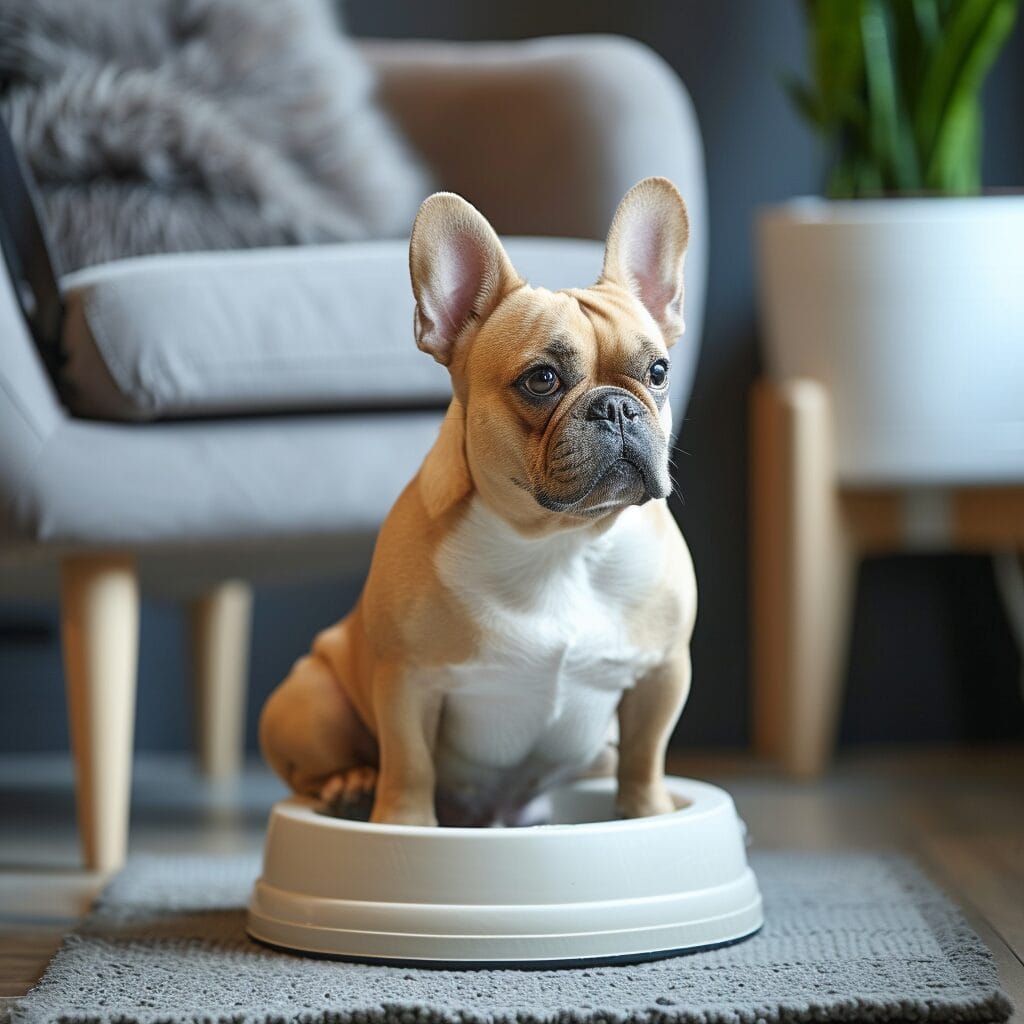
Positive Reinforcement Techniques
When potty training your dog, it’s crucial to use positive reinforcement techniques. This involves rewarding your dog for using the indoor potty system correctly. You can give them treats or praise as a form of positive reinforcement when they use the designated potty spot.
Consistency is key in reinforcing good behavior. By establishing a consistent schedule for potty breaks, you’re helping your dog understand when and where they should go. This consistency reinforces their training and helps them develop a routine for using the indoor dog potty.
Gradual Transition from Outdoor to Indoor Potty Use
To transition your dog from outdoor to indoor potty use, it’s essential to create a positive association with the new indoor potty system. Start by placing the indoor dog litter box or absorbent training pads near the area where your dog usually goes outside.
As your dog becomes more comfortable with this setup, gradually move the indoor potty system closer to its permanent location indoors. During this process, continue using positive reinforcement techniques each time your pet uses the designated area successfully.
Cleaning and Maintenance Tips for Indoor Dog Potties
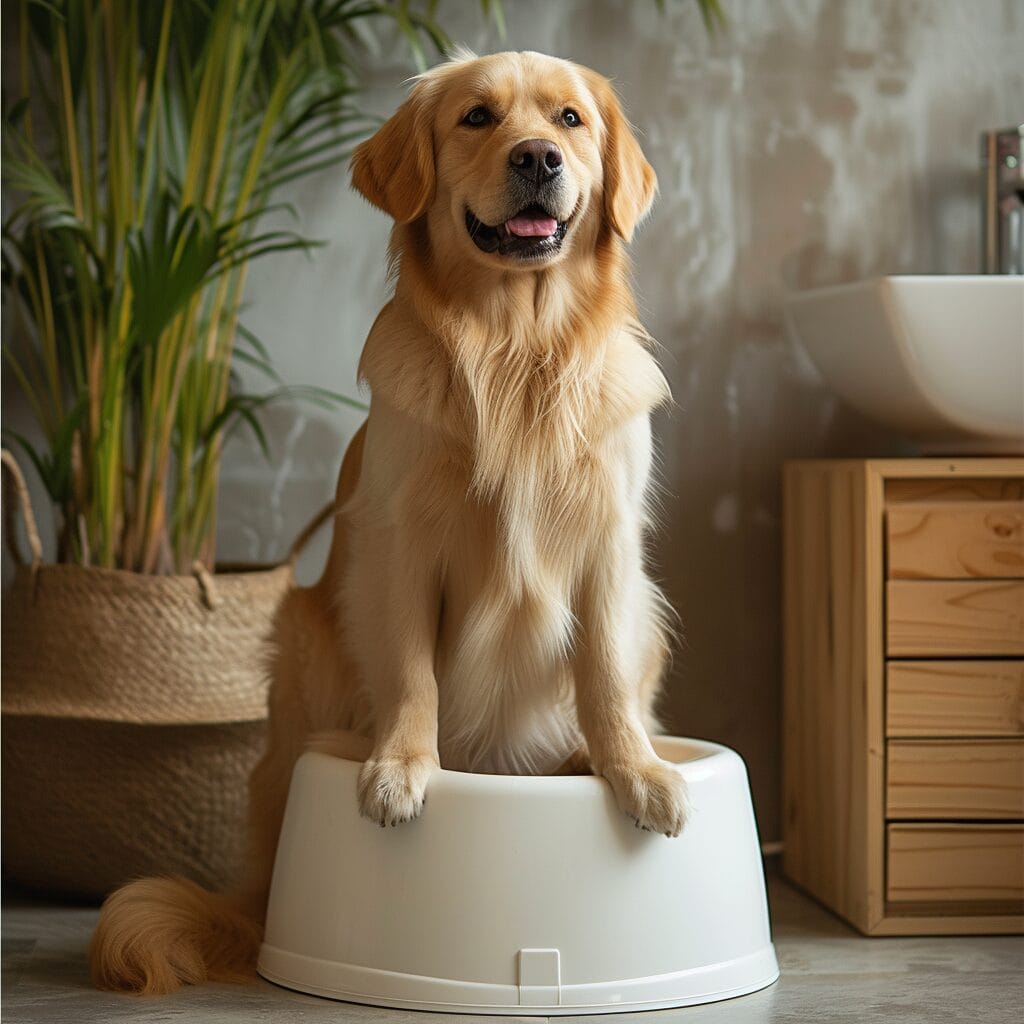
Regular Cleaning
Keeping your indoor dog potty clean is essential to ensure your furry friend’s health and comfort. Regularly removing solid waste from the synthetic grass or pads helps maintain a hygienic environment. This prevents the buildup of unpleasant odors and reduces the risk of bacterial growth. By doing this, you create a more pleasant experience for both you and your pet.
Maintaining cleanliness also involves addressing any urine residue left behind after solid waste removal. Using pet-safe cleaners to eliminate these residues is crucial in preventing lingering odors and maintaining a fresh-smelling indoor space. These cleaners are specifically formulated to break down organic matter without posing any harm to your pet, making them an ideal choice for keeping your dog potty clean.
Replacing Pads or Turf
In addition to regular cleaning, it’s important to adhere to the manufacturer’s recommendations regarding the replacement of disposable pads or synthetic turf. Over time, these components can wear out due to frequent use and cleaning, which may compromise their effectiveness in odor control and hygiene maintenance. By following the guidelines provided by the manufacturer, you ensure that your indoor dog potty continues to function optimally.
When replacing disposable pads or synthetic turf, consider factors such as absorbency (for pads) and durability (for turf). For example, if you notice that disposable pads become saturated quickly despite regular changes, it may be time to explore options with higher absorbency levels. Similarly, if synthetic turf starts showing signs of wear and tear that affect its ability to drain urine effectively, replacing it with a new piece can help maintain cleanliness within the designated area.
Odor Control Strategies for Indoor Dog Potties

Absorb Odors with Activated Charcoal or Baking Soda
To combat odors in indoor dog potty areas, consider using activated charcoal or baking soda. These substances are excellent at absorbing and neutralizing odor molecules, keeping the area smelling fresh. Simply place a layer of activated charcoal or sprinkle some baking soda in the designated potty area to help control odors.
Activated charcoal and baking soda act like sponges, soaking up any unpleasant scents from the dog’s waste. This can significantly reduce the odor emanating from the indoor dog potty system, creating a more pleasant environment for both you and your furry friend.
Enzymatic Cleaners for Effective Urine Odor Breakdown
When dealing with urine odors, enzymatic cleaners are highly effective. These cleaners contain enzymes that break down the components of urine responsible for producing strong, lingering smells. By using enzymatic cleaners on your indoor dog potty system regularly, you can effectively tackle any lingering urine odors, leaving behind a much fresher scent.
Enzymatic cleaners work by targeting and breaking down specific compounds found in urine that contribute to its potent smell. By doing so, they eliminate these compounds rather than simply masking them with other fragrances.
Ensure Proper Ventilation for Minimizing Odors
Proper ventilation is crucial. Adequate airflow helps prevent stagnation of air and reduces the concentration of foul-smelling particles in the environment.
Ideal Placement for Indoor Dog Potties in Your Home
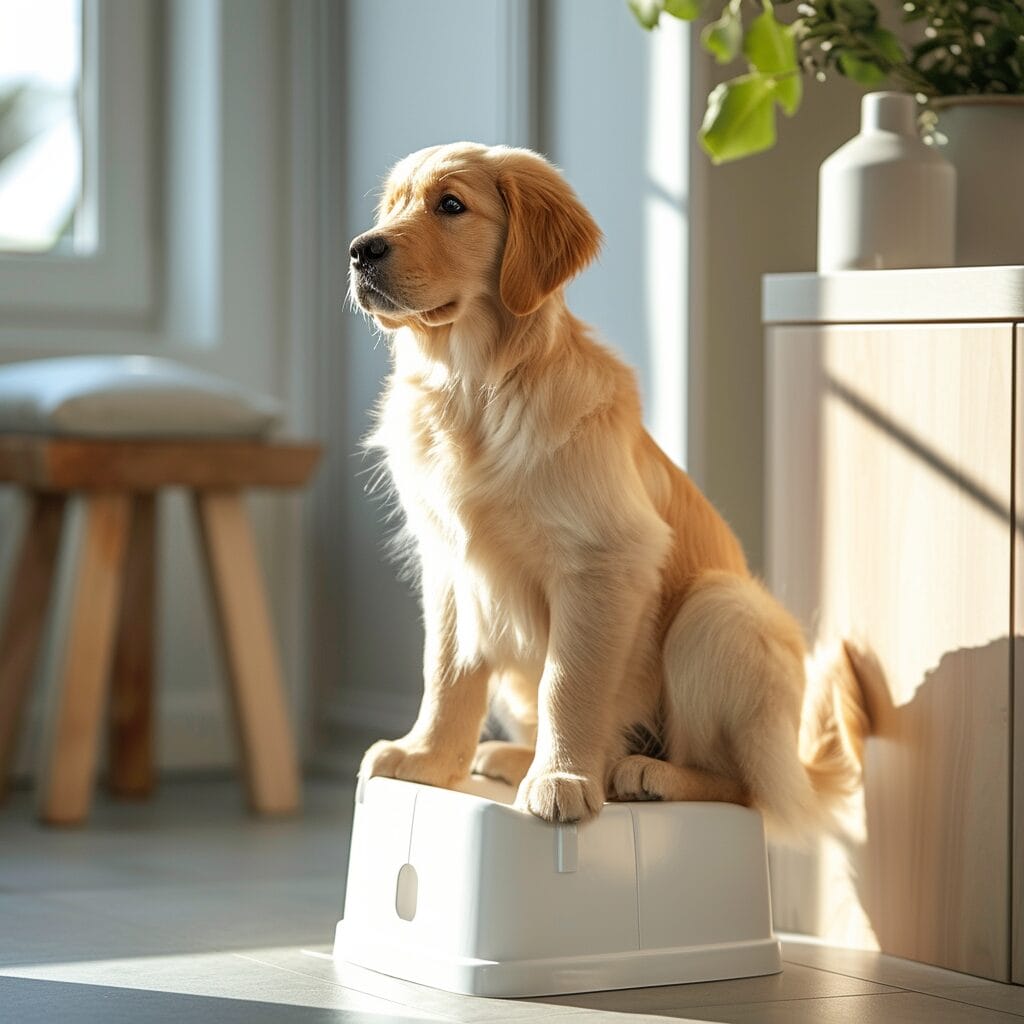
Quiet and Accessible
You should place it in a quiet and easily accessible area for your furry friend. This ensures that your dog can find and use the potty without any obstacles. Consider placing it near a spot where your dog usually goes outdoors, as this familiarity can encourage them to use the indoor potty.
The chosen location should also allow for easy cleaning and maintenance. This means that the area should be convenient for you to access when it’s time to clean or replace the pad or waste bin. It’s essential to make sure that both you and your pet are comfortable with the placement of the indoor potty.
Consider Existing Outdoor Bathroom Spot
If your dog has an existing outdoor bathroom spot, placing the indoor potty nearby can help create a seamless transition from outdoor to indoor bathroom habits. This familiar scent can help encourage your pet to use the indoor potty instead of looking for alternative spots inside your home.
You may want to consider using adhesive pads on top of these systems’ plastic inserts, which makes cleanup easier by allowing you just throw away soiled pads without needing much scrubbing or washing.
Crafting a DIY Indoor Dog Potty
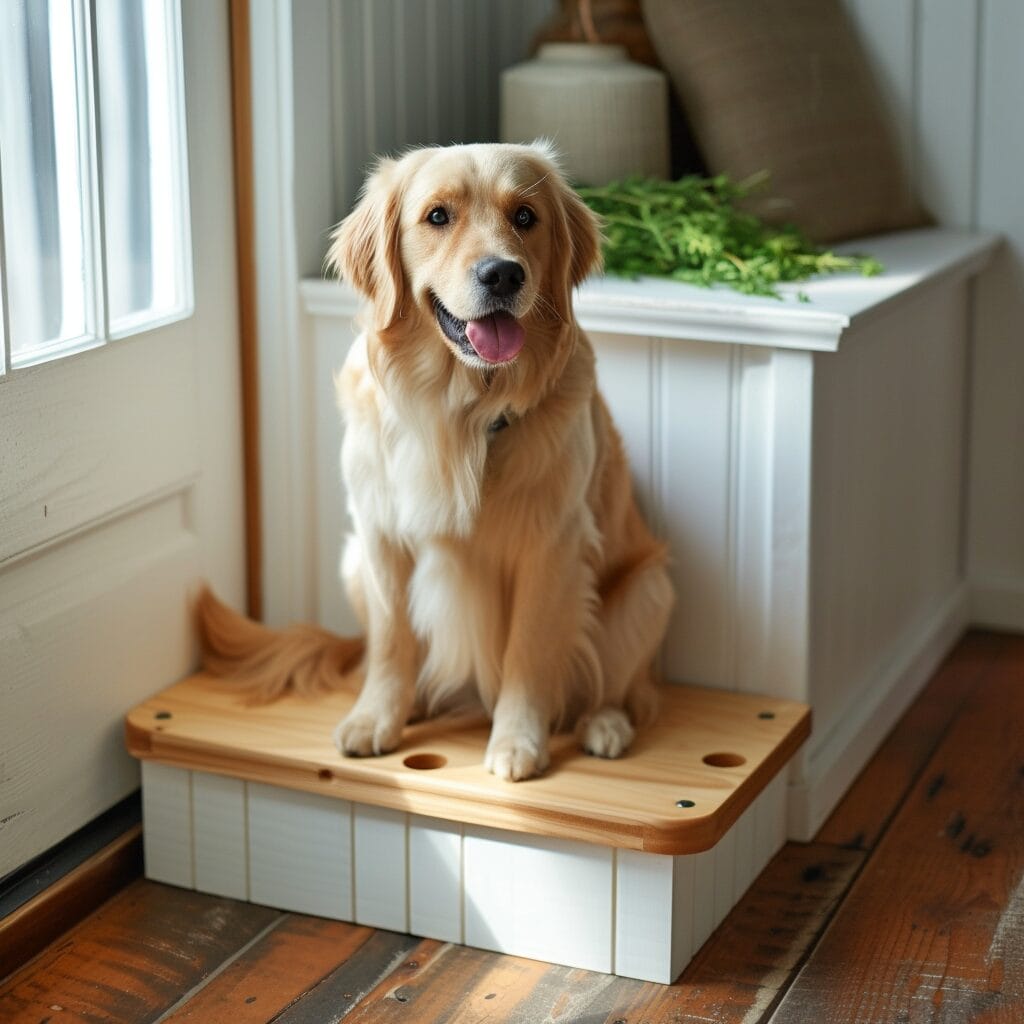
Repurposing Shallow Plastic Containers
Repurposing shallow plastic containers as indoor dog potties is an affordable and sustainable option. These containers can be easily obtained from local stores or even repurposed from items like storage boxes or under-bed organizers. The shallow depth allows easy access for your furry friend while also making it easier to clean.
You can repurpose these containers by adding a drainage system, such as a layer of gravel at the bottom. This helps in managing liquid waste effectively, preventing any unpleasant odors and keeping the surface dry for your pet’s comfort. Incorporating a removable tray within the container facilitates hassle-free cleaning and maintenance.
Customizing with Artificial Turf or Disposable Pads
Customizing the DIY indoor dog potty based on preference involves two popular options: artificial turf and disposable pads. For those opting for artificial turf, a piece of faux grass mat can be fitted into the container, providing a natural feel for your pet to relieve themselves comfortably. On the other hand, utilizing disposable pee pads offers convenience in waste management.
The choice between these customization options depends on factors such as ease of cleaning and personal preference. While faux grass provides a more natural experience for dogs, disposable pads offer quick disposal of liquid and solid waste without requiring frequent washing.
Closing Thoughts
Congratulations on making it to the end of this guide! You’ve learned about the various types of indoor dog potties, factors to consider when choosing one, their effectiveness, benefits, training tips, maintenance strategies, odor control, and even how to craft your DIY indoor dog potty. Now that you’re equipped with all this knowledge, you can confidently select the best indoor dog potty system for your furry friend’s needs and your lifestyle.
So, what are you waiting for? It’s time to put your newfound expertise into action and create a comfortable and convenient potty area for your beloved pup. Whether you opt for a grass pad, litter box, or a specialized indoor potty system, remember that consistency is key when training your dog to use it. With the right indoor dog potty setup and some patience, you’ll be well on your way to a cleaner home and a happier pet!
Frequently Asked Questions
What are the different types of indoor dog potties?
There are various types of indoor dog potties, including grass pads, pee pads, and litter boxes. Each type has its own advantages and suitability based on your dog’s preferences and your living situation.
How can I train my dog to use an indoor potty?
Consistent training with positive reinforcement is key. Start by placing the potty in a designated spot, encourage your dog to use it, and reward them for doing so. Gradually reduce outdoor bathroom breaks as they get used to the indoor potty.
What factors should I consider when choosing an indoor dog potty?
Consider your dog’s size, breed, and habits. Also think about the maintenance requirements of each type of potty system, as well as how it will fit into your home environment.
Are there benefits to using an indoor dog potty?
Yes! Indoor dog potties provide convenience for you and comfort for your pet. They’re especially useful during extreme weather or for elderly or disabled dogs who may struggle with outdoor trips.
How can I control odors from an indoor dog potty?
Regular cleaning is essential. Use pet-safe cleaners and consider odor-absorbing products like baking soda or activated charcoal near the area. Proper ventilation also helps minimize odors in the vicinity.

